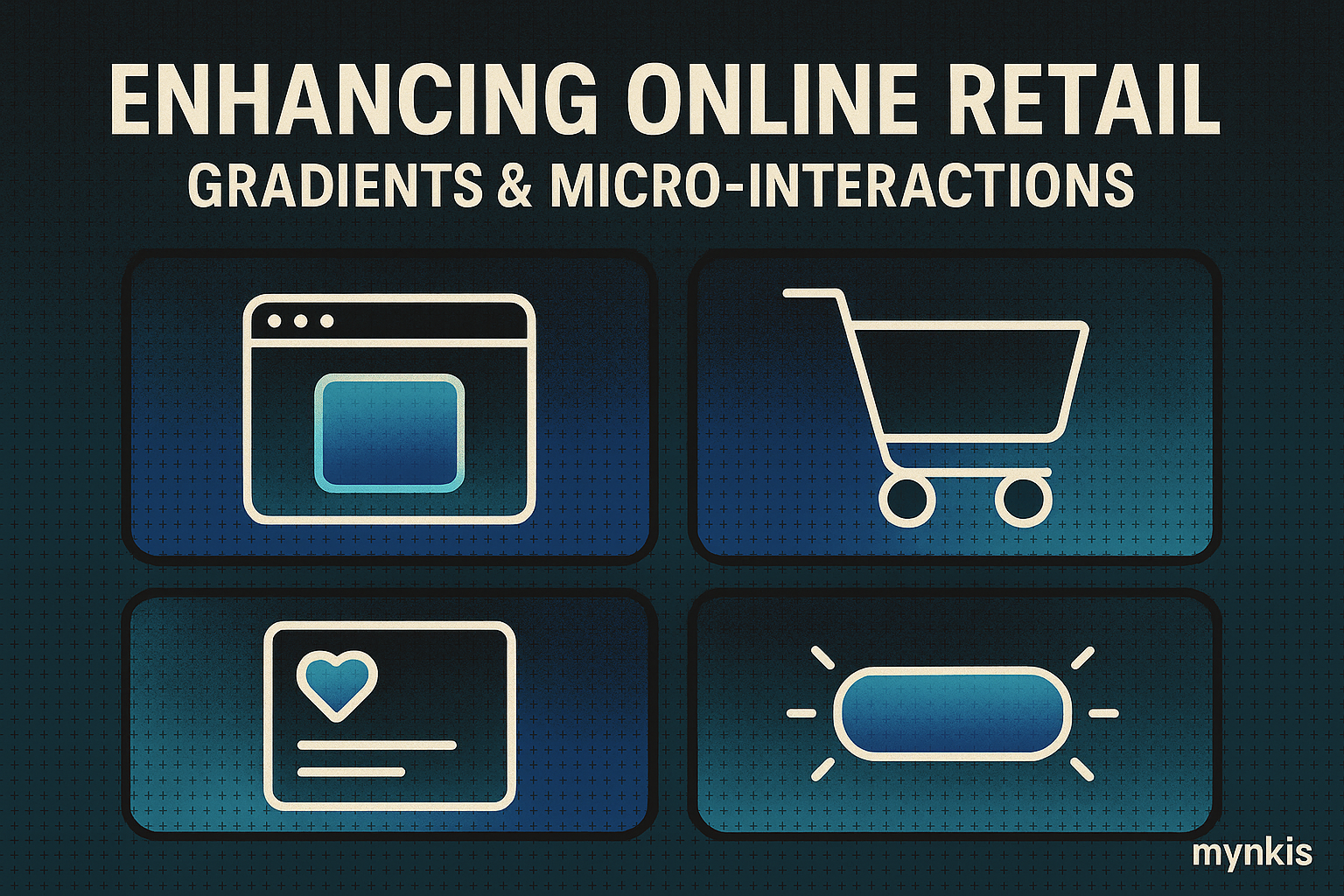Schedule a Demo
When I work with retailers, I've seen how a well-designed website is the linchpin to a successful online store. Gradients have recently surged in popularity, not just as a design trend but as a strategic tool for enhancing user experience. In my observations, when used effectively, gradients can guide a visitor's eye towards key elements, such as special offers or new product arrivals. This isn't just about making things look cool; gradients can subtly improve user experience by creating visual hierarchy and interest.
I recall working on a project where we introduced gradients into the product display area. We noticed a significant boost in user engagement, as the smoother transitions in color and hue grabbed attention much more effectively than the traditional, stark blocks of color. Based on this, when considering custom software development for an e-commerce site, integrating gradients might be a smart move to elevate your brand's visual appeal.
Micro-interactions are those subtle, responsive details in website design—like a button changing color when hovered over or a quick animation when a task is completed. In my collaborations with operations managers, micro-interactions have proved instrumental in improving user experience and enhancing customer satisfaction. They might seem minor, but in a digital environment where users demand immediacy, these interactions play a crucial role in making the site feel more dynamic and responsive.
In discussions with leading UX experts at organizations like the Nielsen Norman Group, micro-interactions have been likened to punctuation in a sentence, offering a touch of finesse to the user's journey. For retailers building their enterprise web solutions, this is essential. If you're focused on fostering customer loyalty and enhancing retention, these micro-interactions can significantly impact your brand's overall user experience.
Of course, aesthetics alone won't propel your e-commerce to the next level. It's all about striking the right balance between visual allure and site functionality. In customizing software for clients, I've found that integrating SEO-friendly practices is paramount. According to a study by Moz, user-friendly and appealing designs boost SEO rankings, particularly when users spend more time interacting with the site.
The role of gradients here is twofold: attract and retain. The goal is to use them to draw users in deeper, enhancing both their experience and, in turn, your SEO metrics. These vibrant visual elements can help differentiate your site from competitors' by offering a more engaging and interactive shopping environment.
Where custom software development comes into play is the ability to tailor micro-interactions and gradients specifically for SEO optimization. Integrating search engine-friendly elements like responsive, optimized images into your site’s design is crucial. Studies from Search Engine Journal illustrate that pages that load quickly and have well-designed, interactive elements often see higher engagement and better ranking.
When considering enterprise web solutions for your retail business, think about how technology can be harnessed to craft a site that isn't just appealing but performance-friendly, too. Employing the latest software can provide a seamless blend of look and function, aligning your design with best practices that both users and search engines will love.
In real-world applications, retailers have successfully integrated both gradients and micro-interactions to bring life to their online stores. For instance, a client of mine shifted from a minimalist, flat design to incorporating subtle gradients across their banners and call-to-action buttons. Their customer feedback was overwhelmingly positive; the site was described as engaging without being overwhelming.
Similarly, using micro-interactions effectively has been a game changer for another of our clients. When a user adds an item to the shopping cart, a brief animation acknowledges the action, providing a satisfying user experience. Over time, it's clear that these small but thoughtful interactions encourage more completed purchases and boost overall customer satisfaction.
As we gaze into the future of website design, the trends seem clear: gradients and micro-interactions will only grow in importance. The Association for Computing Machinery (ACM) projects a continued rise in the demand for sophisticated user interface interactions, suggesting that businesses who embrace these design elements early will stay ahead of the curve.
While some might see these as transient design fads, the insights from technology experts underline their importance in modern web development. For those invested in custom software development and enterprise web solutions, keeping these elements at the forefront of design strategy can set your brand apart.
As a retail executive looking to enhance your online store, consider the impact of subtle design choices like gradients and micro-interactions. Based on available research and our real-world implementations, these elements can truly refine user experience and help achieve better SEO visibility without relying heavily on paid advertising.
Yet, as with any innovation, individual results may vary. It's crucial to test and iterate on these design decisions to find the perfect fit for your unique customer base. Remember, it's not just about following a trend; it's about harnessing design to meet business goals in the e-commerce landscape.
